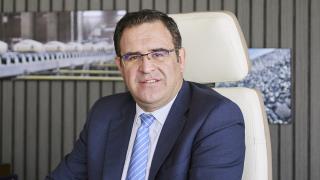To support cement industry decarbonisation, researchers at the University of Cambridge, the University of Warwick and Imperial College London are developing the fundamental science behind Cambridge Electric Cement, produced without emissions by combining industrial processes of steel and cement recycling. Dr Philippa Horton of the University of Cambridge provides an insight into the research’s challenges and achievements to date.
Cambridge Electric Cement has developed a novel way to recycle concrete and create a slag capable of replacing Portland cement (See Figure 1). In the process, concrete and demolition waste (CDW) is crushed to separate the stones, sand and cement. The old cement powder is then used instead of lime-flux in conventional steel recycling using an electric arc furnace (EAF). As the steel melts, the flux forms a liquid slag. After rapid cooling in the air, the slag is ground into a powder that is virtually identical to clinker.
